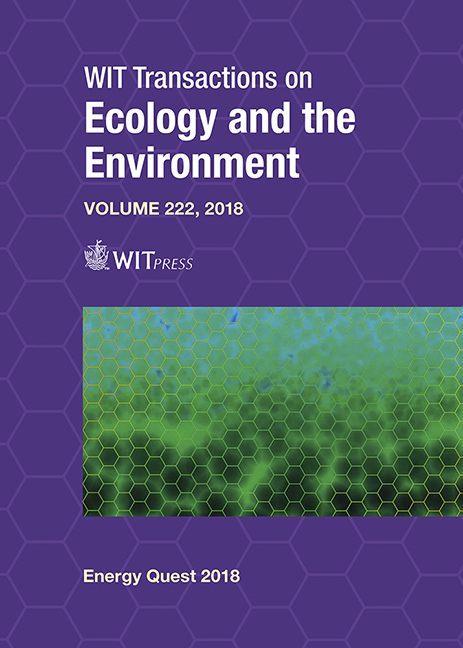CHALLENGES AND OPPORTUNITIES FOR ENERGY RECOVERY FROM MUNICIPAL SOLID WASTE IN THE RUSSIAN FEDERATION
Price
Free (open access)
Transaction
Volume
222
Pages
13
Page Range
131 - 143
Published
2019
Paper DOI
10.2495/EQ180131
Copyright
WIT Press
Author(s)
STEPAN POLYGALOV, GALINA ILINYKH, NATALIA SLIUSAR, VLADIMIR KOROTAEV, IRINA RUKAVISHNIKOVA
Abstract
Energy recovery from municipal solid waste (MSW) is currently a key factor in waste management in Russia, as can be seen from the corresponding changes in the state regulatory framework. The paper presents a comparative assessment of different waste flow characteristics; it focuses on pre-treatment options and the method of subsequent thermal treatment. It reflects the basic method of untreated MSW incineration and other advanced technologies which have different levels of waste preparation. Step-by- step research has been carried out in a large Russian city in order to determine different technological approaches to recovering energy from MSW. The study included: 1) field studies of the composition and characterization of MSW; 2) laboratory studies of MSW thermal properties, i.e. moisture, ash content and calorific value; 3) several options for waste treatment schemes with equipment of different technical specifications; 4) analysis of material flow, energy flow and key substance flow according to these considered schemes. The research revealed that for all seasons a significant proportion of MSW (almost 40%) is represented by fines (below 50 mm). On average, the energy potential of MSW (the total content of waste paper, polymers, textiles, wood, multilayer packaging, leather, rubber, footwear) amounts to about 40%. It was found that MSW calorific value depends on fraction size, since screening (over 50 mm) is characterized by high moisture and low content of valuable components, compared to MSW greater than 50 mm in size. Pre-processing and treatment of MSW allows solid recovered fuel (SRF) to be obtained with a calorific value similar to brown coal. The energy balance of the process allows the conclusion that 33.8% of initial MSW energy potential is concentrated in residues from the sorting process, since it has a relatively low calorific value of 4.8 MJ/kg, but a high mass fraction of 47.9%. In the process of MSW treatment and solid fuel production, most of the chlorine and mercury (80% and 55% respectively) is removed by the rest of the sorting process. The data obtained in the study can be used in selecting the optimal option for energy recovery from MSW.
Keywords
municipal solid waste, energy recovery, solid recovered fuel, calorific value





